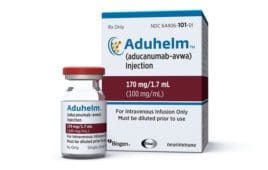With the support of the National Institute on Drug Abuse, scientists at Wake Forest School of Medicine have been working to find a safe, non-addictive pain killer to help fight the current opioid crisis in this country.
And they may have done just that, though in an animal model.
Known as AT-121, the new chemical compound has dual therapeutic action that suppressed the addictive effects of opioids and produced morphine-like analgesic effects in non-human primates.
“In our study, we found AT-121 to be safe and non-addictive, as well as an effective pain medication,” said Mei-Chuan Ko, professor of physiology and pharmacology at the School of Medicine, part of Wake Forest Baptist Medical Center.
“In addition, this compound also was effective at blocking abuse potential of prescription opioids, much like buprenorphine does for heroin, so we hope it could be used to treat pain and opioid abuse.”
The findings are published in the Aug. 29 issue of the journal Science Translational Medicine.
The main objective of this study was to design and test a chemical compound that would work on both the mu opioid receptor, the main component in the most effective prescription pain killers, and the nociceptin receptor, which opposes or blocks the abuse and dependence-related side effects of mu-targeted opioids. Current opioid pain drugs, such as fentanyl and oxycodone, work only on the mu opioid receptor, which also produces unwanted side effects – respiratory depression, abuse potential, increased sensitivity to pain and physical dependence.
“We developed AT-121 that combines both activities in an appropriate balance in one single molecule, which we think is a better pharmaceutical strategy than to have two drugs to be used in combination,” Ko said.
In the study, the researchers observed that AT-121 showed the same level of pain relief as an opioid, but at a 100-times lower dose than morphine. At that dose, it also blunted the addictive effects of oxycodone, a commonly abused prescription drug.
The bifunctional profile of AT-121 not only gave effective pain relief without abuse potential, it also lacked other opioid side-effects that patients typically struggle with, such as itch, respiratory depression, tolerance and dependence.
“Our data shows that targeting the nociceptin opioid receptor not only dialed down the addictive and other side-effects, it provided effective pain relief,” Ko said. “The fact that this data was in nonhuman primates, a closely related species to humans, was also significant because it showed that compounds, such as AT-121, have the translational potential to be a viable opioid alternative or replacement for prescription opioids.”
Next steps include conducting additional preclinical studies to collect more safety data, and then if all goes well, applying to the Food and Drug Administration for approval to begin clinical trials in people, Ko said.
AT-121 was developed by Nurulain T. Zaveri, a member of the research team at Astraea Therapeutics.
The work was supported by grants from the National Institutes of Health, National Institute on Drug Abuse R01DA032568, R01DA027811, R44DA042465, R21DA040104, and R21DA044775, and the U.S. Department of Defense W81XWH-13-2-0045.
Co-authors are: Huiping Ding, Norikazu Kiguchi, Paul W. Czoty, of Wake Forest School of Medicine; Nurulain T. Zaveri, Dennis Yasuda, Pankaj R. Daga, Willma, E. Polgar, James J. Lu, of Astraea Therapeutics, Mountain View, Calif., and Shiroh Kishioka, M.D., Norikazu Kiguchi, of Wakayama Medical University, Japan.
SOURCE: Wake Forest Baptist Medical Center
Filed Under: Neurological Disease




